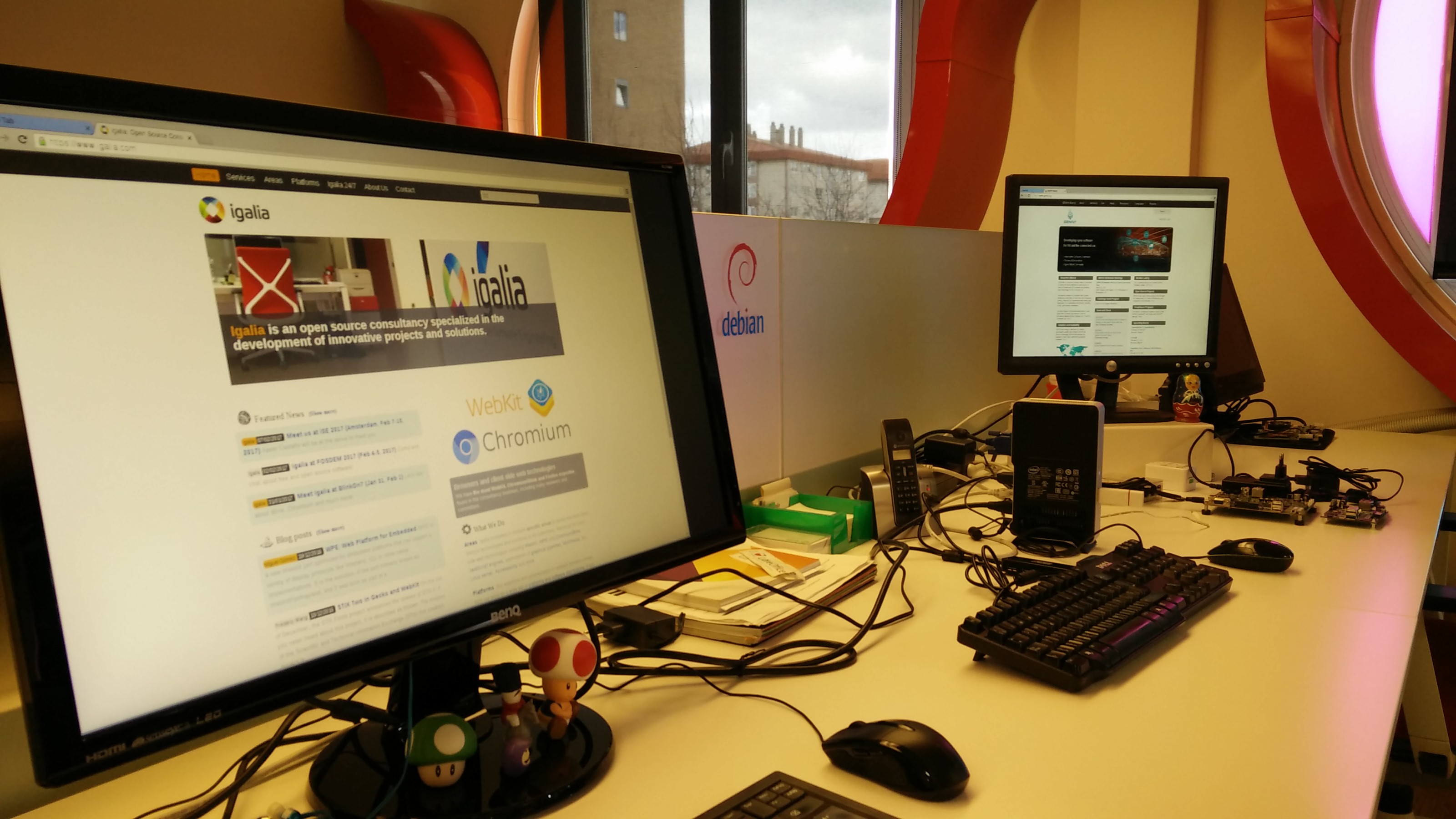In the previous blog post, we introduced the work to port Chromium to the GENIVI Development Platform (GDP). We have continued working to improve the integration, and make everything easier to build.
In first place, we are now using the latest code from the Ozone-Wayland project that builds on top of Chromium 53 instead of Chromium 48. We have rebased the meta-browser recipes for the newer version and contributed the patch to the upstream project, together with other patches to clean the build process and to fix issues on certain platforms.
Some issues detected in the earlier steps of the integration were addressed. The aspect ratio of the browser window has been modified to fit the GDP demonstration HMI. A performance degradation when playing video had also been detected, the problem was not actually in Chromium, Pulseaudio was taking all the CPU away from the browser processes when using the default null sink. We fixed it by setting Alsa as the default sink with the command pacmd "set-default-sink AlsaPrimary" (do it in /etc/pulse/default.pa to make the change persistent). We are obviously bypassing the GENIVI Audio Manager here, it should be integrated at a later point.
We are in the process to merge our patches into the GENIVI platform, to make the Chromium browser part of the default build. You currently have to use our fork of meta-genivi-dev, while the meta-browser layer has already been added as a submodule and it’s not necessary to explicitly add it.
Finally, we have been testing how Chromium and Ozone-Wayland behave in multi-seat environments using the Wayland IVI Extension and the IVI Layer Manager libraries to have full control of screens, layers, surfaces and focus. We have extracted some conclusions that will allow us to make Chromium behave as expected in this scenario.
All the work we have done is publicly available already. You may try it by:
- Setting up GDP master for your board. Make sure you are using the latest master to get the meta-browser layer automatically.
- While review is ongoing, you may add our fork as a new remote for the meta-genivi-dev submodule and switch to the
chromium-integrationbranch. - Finally, just bitbake your image, the Chromium browser has been made part of the default image in one of the meta-genivi-dev patches.
A warning about platforms: please notice we are currently using a Minnowboard as a test platform. There is a known issue on Raspberry Pi that we hope will be fixed soon. Regarding R-Car Gen. 2 boards, we think it should work, we have ran Chromium there before but not recently.
This work is performed by Igalia and sponsored by GENIVI through the Challenge Grant Program. Thank you!


